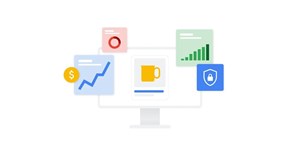
Subscribe & Follow
Jobs
- Copywriter Cape Town
- Junior Copywriter Cape Town
- Digital Designer Cape Town
- Digital Marketing and Content Designer Johannesburg
- PR and Digital Content Writer Sandton
- Multimedia Motion Designer Johannesburg
- Financial Accountant Johannesburg
- Sales and Business Development Manager Cape Town
- Content Curator Ilovo, Sandton
- Digital Archive Intern Cape Town
Getting users to convert

The simple fact is that the majority of your visitors don't convert. This may seem confusing to you. After all, aren't they the ones that clicked on the search result, advert or link that brought them to your site in the first place?
Why do some users not convert?
Perhaps you don't have the products or services they need, perhaps it's your prices (or lack of prices) displayed? It could be that your badly laid-out navigation meant they were unable to find what they were looking for, or that half way through the check-out process they got frustrated with filling out an endless form and decided to take their business elsewhere.
Whatever the reason, users are going to leave - and with them, your opportunity to make a sale/secure a lead/get a newsletter subscriber. Considering the money and effort it takes to get them to your site, it really is a waste to see them leave without converting.
How do I get more users to convert?
The answer is simple - identify and improve the problem areas on your site through the process of conversion optimisation.
An easy first step on the path to successful conversion optimisation is installing web analytics on your site. Web analytics programs, such as Google Analtyics, measure a variety of metrics on your site, allowing you to answer important questions about your traffic:
- How many visitors come to my site each day?
- How long do they stay?
- What is my conversion rate?
Also, once you are measuring site metrics, it is possible for you to compare how changes to your site affect traffic, which is vital if you are to know which changes work best. There are a variety of web analytics solutions that range from very expensive to free - and the good news is that a free solution such as Google Analytics is more than sufficient for any site's needs.
Defining goals
The next step is defining which goals or most-desired-actions (MDA) are central to your site's objectives. Are you aiming to drive online sales, get newsletter sign-ups, acquire leads or simply provide information to customer?
In order to make improvements to your site, it is imperative that you know what “conversions” you are trying to optimise your site for. Use your web analytics programs to clearly identify those goals so that you can compare how traffic sources, demographics or landing pages affect your conversion rate.
Google Analytics has a variety of conversion tracking options - from simple goal tracking based on a user accessing a certain page to highly customisable eCommerce tracking, which can be set up to record the type and value of products purchased on your site.
Identifying problem areas
There are several ways of identifying problem areas on your site. Web analytics will quickly help you to identify where your site is not performing.
For example, if 50% of traffic landing on your home page is leaving within a matter of seconds (measured as “bounce rate”), then you know you have a problem on your home page. A solution such as Google Analytics also allows you to set up goal funnels or conversion paths by identifying which pages a user must progress through in order to complete the MDA. Once you can pin point which pages are causing users to abandon the funnel, you will know where to start making changes.
Listening labs or usability testing involves observing users interact with your site to see where they encounter problems. Similarly, heatmap generating tools such as Crazy Egg are a type of web analytics software that track your user's mouse-interactions. Identifying which elements on a page that users click or don't click on can help you figure out what needs to be changed on your site.
Test, change, measure: rinse and repeat
Changes should be made one at a time, and each change needs to be treated as an objective test. This involves forming a hypothesis about which change should be made (eg increasing the size of the “buy now” button to see if it results in more people clicking on it), making the change and then carefully measuring the results to see whether the desired result was achieved. You will be surprised at how often your predicted results differ from what your users are telling you through the data.
Conversion optimisation software such as Google Website Optimizer (also free, and accessible through Google Analytics) can assist you in this process by allowing you to set up several A/B split or multivariate tests on your website's pages at once. You can test variations of the same page by editing page elements (such as the size of the headline, type of picture, colour of buttons or length of copy) to find out which page delivers the best results.
Conversion optimisation is a gradual ongoing process of testing and refining. It's unlikely that you will double your conversion rate overnight, but it has been known to happen. The sooner you get started, the sooner you can start getting more out of your traffic. Get started with conversion optimisation today by setting up a Google Analytics account at www.google.com/analytics.
About Heidi Ocker
Heidi Ocker is a campaign manager and conversion optimisation specialist for Quirk eMarketing (www.quirk.biz), Africa's first Google Analytics Certified Consultancy. With years of experience in all facets of eMarketing, Heidi assists clients in improving the profitability of their web properties. Contact Heidi at or tel +27 (0)21 462 7353.

















